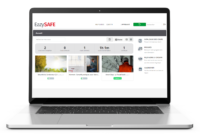Building a Safer Workplace: The Role of Incident Reporting
What Is Incident Reporting and Why Is It Important?
Did you know that workplace incidents cost businesses billions annually in lost productivity, legal claims, and compensation? Yet, many incidents go unreported, increasing the risk of repeat occurrences.
Incident reporting is a crucial component of workplace safety, ensuring that risks are identified, addressed, and prevented. But how many organizations truly have an efficient system in place? Let’s explore why incident reporting matters and how businesses can improve their reporting processes.
What is Incident Reporting?
Incident reporting is the process of documenting workplace accidents, near misses, and safety concerns. It serves as a structured way for employers and employees to track hazards, investigate causes, and implement corrective measures.
Different types of incidents that require reporting include:
- Near misses – Situations where an accident was narrowly avoided.
- Minor injuries – Incidents causing small injuries but still requiring attention.
- Major accidents – Serious incidents that lead to severe injury, loss of life, or significant damage.
- Safety violations – Breaches of workplace safety protocols that pose risks.
Why is Incident Reporting Important?
A strong incident reporting system benefits businesses in several ways:

Protecting Employees:
When incidents are reported, management can take corrective actions to prevent future accidents.

Ensuring Legal Compliance:
Many industries require businesses to record and investigate workplace incidents to comply with safety regulations.

Improving Workplace Culture:
A well-structured system fosters a culture of safety and transparency, where employees feel comfortable reporting concerns.

Reducing Costs:
Preventing incidents lowers expenses related to medical claims, legal fees, and lost productivity.
Common Challenges in Incident Reporting
Despite its importance, many organizations face barriers to effective incident reporting, such as:
1. Fear of Retaliation:
Employees may hesitate to report incidents if they fear punishment or blame.
2. Lack of Awareness:
Many workers don’t know the reporting process or why it matters.
3. Cumbersome Processes:
If reporting is time-consuming or complex, employees may avoid it.
4. Data Overload Without Action:
Collecting reports without analyzing trends or implementing solutions reduces the system’s effectiveness.
Best Practices for Effective Incident Reporting
To ensure efficient and meaningful incident reporting, businesses should:
- Simplify the Process: Make it easy for employees to submit reports through digital solutions rather than paper forms.
- Encourage a Reporting Culture: Reinforce that reporting helps everyone and won’t result in negative consequences.
- Use Incident Management Software: Solutions like Fit2Trade’s Incident & Accident Management Software provide a centralized platform for tracking and analyzing workplace incidents, ensuring compliance, efficiency, and continuous improvement.
- Act on Reports: Management should investigate every incident and implement corrective measures to prevent future risks.
- Provide Feedback: Employees should receive updates on reported issues, reinforcing their role in workplace safety.
Conclusion
Incident reporting isn’t just a compliance requirement—it’s a fundamental practice that protects employees, reduces risks, and strengthens workplace culture. Organizations that prioritize reporting and leverage digital solutions can significantly improve safety outcomes.
Does your workplace have an effective incident reporting system? If not, now is the time to improve it!

Discover our Safety Training Platform
Train your employees anytime, anywhere with our environmental, health, safety and wellness training platform.

TAILORED TRAINING
Discover our safety training courses and ehs onboardings, which can be customised and offered in several languages.

SAFETY MANAGEMENT
Ensure the distribution of your safety policy by training your permanent, temporary or seasonal staff.

GLOBAL MONITORING
Simplify the management of your safety policy thanks to the numerous dashboards and training reports.
